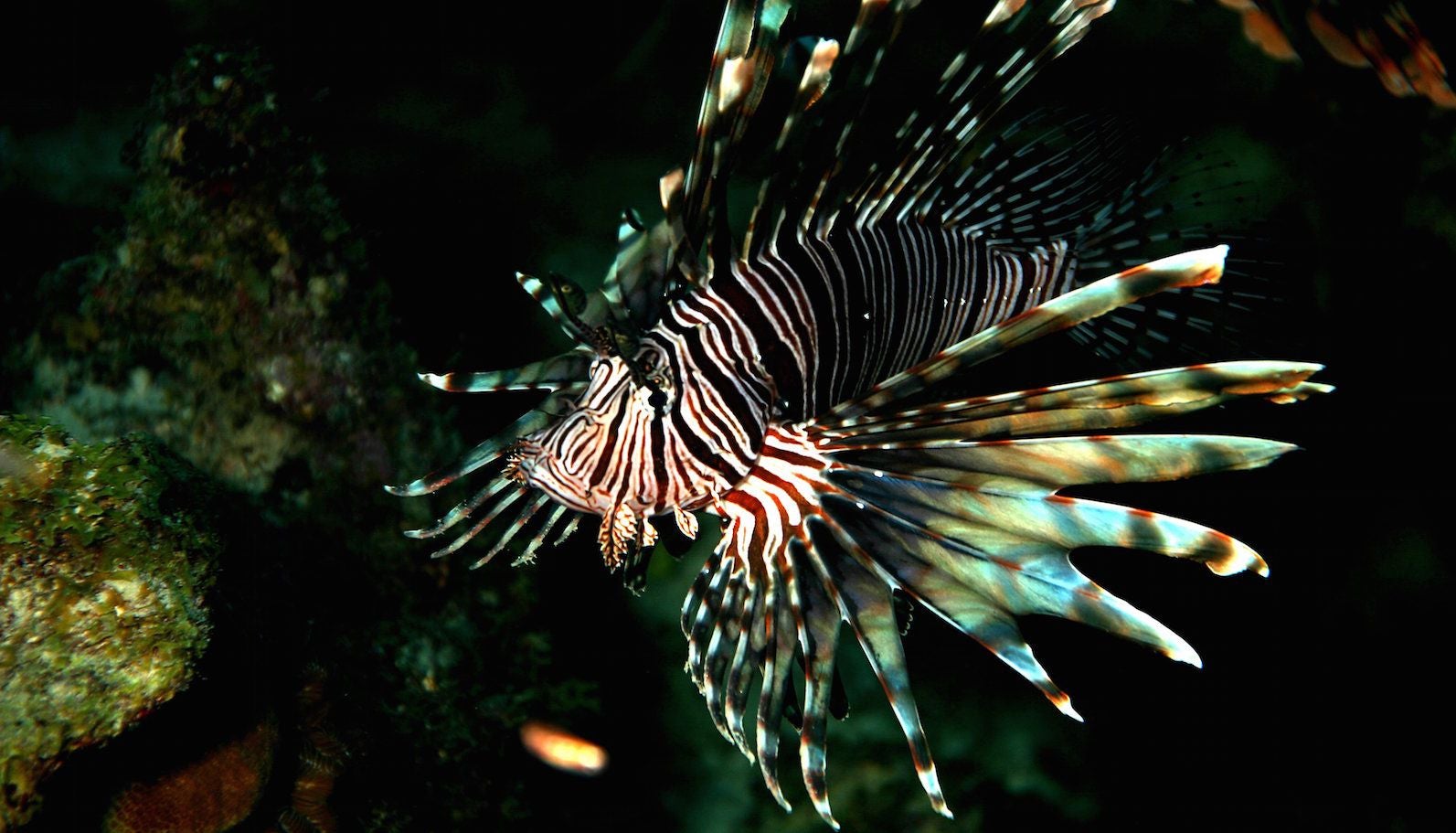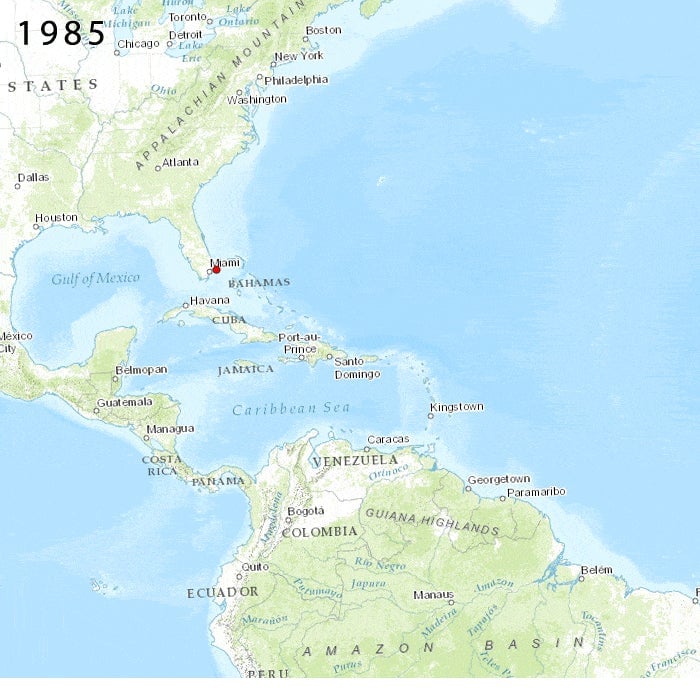Watch this grouper stalking and destroying a lionfish
This post has been updated.


This post has been updated.
The takeover of the Atlantic and Caribbean by invasive lionfish now stretches from Venezuela to Rhode Island—and there’s nothing out there to stop them. Well, almost nothing. This hungry Nassau grouper coolly stalking a lionfish before devouring it Jaws-style is sure giving it its best shot:
The footage was taken off the coast of Little Cayman by Jim Hart, co-founder of Lionfish University, an NGO that educates people about the Atlantic’s lionfish invasion. It’s the first known instance of a grouper preying on a lionfish captured on film, says Hart.
That’s important because groupers could, in theory, act as what’s called a “biocontrol”—when one organism is deployed to keep another in check—against the Caribbean’s lionfish population.
It’ll take a lot of hungry groupers to curb the infestation. The invasion of these frilly striped tropical beauties, which originally hail from the Indo-Pacific, began circa 1985. It was that year that, according to the leading theory, someone released a dozen or so lionfish from a home aquarium into south Florida waters. Since then, they’ve rapidly colonized the Atlantic.

Ruthless predators with a voracious appetite, invasive lionfish are known to gobble up to nine-tenths of the small and juvenile fish within a coral reef, throwing whole ecosystems out of whack. They’re lousy at portion control; so wantonly do they prey on other fish that they develop flab—almost unheard of among fish. Lionfish breed as excessively as they eat, allowing them to form densities that look like this:
Though groupers like the one in the YouTube clip have been known to chow down on lionfish when fed them by divers, this is the first footage of a grouper preying on a lionfish without encouragement, reports Cayman News Service. However, Lad Akins of Reef Environmental Education Foundation (REEF), a marine conservation NGO, says that “there was definitely some human interaction” in the setup of the video clip taken.
This sort of encouragement is a worry, he says, because of the dangers in teaching predators—e.g. groupers, sharks, moray eels—to expect lionfish feedings from divers.
“In fact, there have been a number of cases where divers were severely bitten by eels and sharks that have been conditioned for a free handout—in some cases even when they don’t have lionfish,” says Akins, who notes that groupers on the bigger side can be dangerous to people as well.
However, Lionfish University’s Jim Hart tells Quartz that though the grouper had clearly encountered lionfish before in the company of divers, he undertook ”no overt action” to orchestrate the interaction between the grouper and the lionfish. “The grouper did not wait for me to manipulate or kill the lionfish, but went right to work try to find a way to take the lionfish out,” says Hart.
A big part of this controversy swivels on the worry that munching on lionfish could be dangerous to the predators themselves.
Upon discovery that they were being hunted by a grouper, most fish would flee or hide. But as you’ll note in the video, the lionfish cruises into the open water, turning its back on the larger fish. That’s probably why it takes the grouper so long to chow down, says Akins—the venomous spines that line its back deter predators. That venom can make fish wish they’d gone hungry; scientists have documented sharks, morays and groupers in marked distress after eating a lionfish (the grouper’s frenzied swimming toward the bottom seen in the video might be a sign of this too, says Akins).
This makes the possibility that groupers might act as a lionfish biocontrol seem unlikely. While a 2011 study of a chain of Bahamian reefs and marine reserves found a sevenfold decline in lionfish numbers in areas where groupers abound, more recent studies have failed to produce the same results.
Those venomous quills likely keep them safe from predators in their native Indo-Pacific seas as well. It’s been hard to know for sure, however, because unlike in the Atlantic and Caribbean, their numbers there are so small. Scientists’ best guess is that parasites keep their numbers in check, as well as a huge population of tropical sea creatures that like to eat lionfish eggs and larva.
Unfortunately, the Caribbean has far fewer of these planktivorous fish—which is why Akins says “we haven’t seen the worst” of the lionfish invasion yet. Without any fish to eat them, colonies of future baby lionfish keep riding the current further up into the Gulf of Mexico and down the coast of Latin America toward Brazil.
Update Mar. 26, 9am (EST): This post has been updated with quotes from Akins and Hart to reflect the controversy surrounding diver interference with grouper-lionfish interactions, as well as more detailed information about lionfish ecosystem dynamics. It also flags additional research that contradicted the findings of the 2011 study on grouper and lionfish numbers.
The top image is by Flickr user Laszlo Ilyes (image has been cropped).